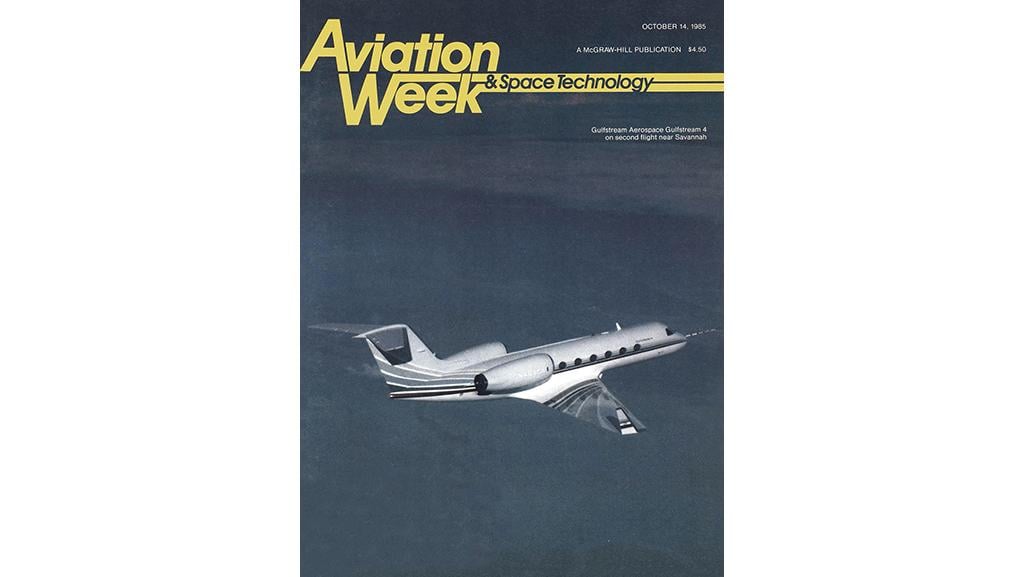
Gulfstream Aerospace was planning to equip its newest jet, then under development, with four Rolls-Royce RB401 engines, each rated at 7,000-lb. thrust. But when word reached its headquarters in Savannah, Georgia, that the British engine-maker was developing a refanned version of the Spey, which powered the Gulfstream 2 and 3, the airframer asked for details, which Rolls provided.
It took several months, but once Gulfstream Chairman and CEO Allen Paulson became convinced that the new engine, the Tay 611-8, was a better match, he took action. During a Rolls Christmas luncheon at New York’s Waldorf Astoria hotel in 1982, Paulson and Ralph Robins, then the engine company’s commercial director and who would go on to be knighted as chairman and CEO, struck a deal for 200 Tays. Their agreement was famously recorded on a 3x5-in. card and a cocktail napkin.
When the twinjet Gulfstream 4 took flight for the first time on Sept. 19, 1985, it appeared to be a 5-ft. stretch of its predecessor, but it was much more. The first noticeable difference was its sound. Whereas Speys delivered ear-piercing shrieks, the wide-fanned Tays whooshed. And with each generating 12,240-lb. thrust (later derated to 13,850), the Tays carried the 72,000-lb. executive jet aloft at 4,000 fpm, gave it high-speed cruise of 487 kt. and an unprecedented intercontinental IFR range of 4,322 nm. Beyond that, the G4 boasted the first “all-glass” flightdeck featuring cathode-ray-tube instruments and the first cabin with three seating sections.
The G4 entered service in 1987, and by the time production of it and several variants ended in 2018, more than 900 had been delivered.
Subscribers can access every issue of Aviation Week back to 1916 at: archive.aviationweek.com





